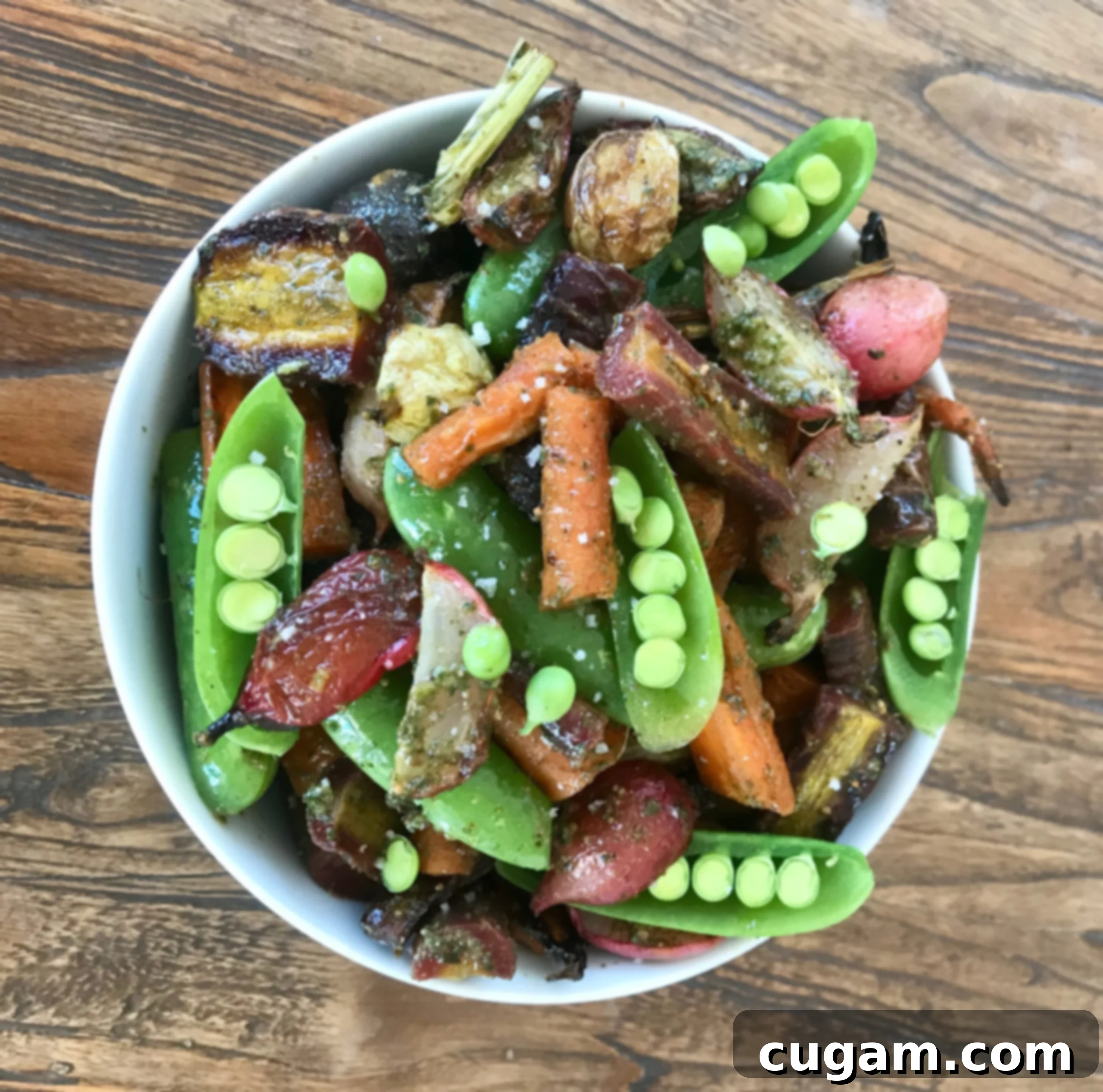Roasted Vegetables with Homemade Carrot Top Pesto: A Fresh & Flavorful Waste-Free Summer Delight
Summer has arrived, bringing with it a vibrant array of fresh produce and a renewed desire for simple, yet incredibly flavorful meals. As the days grow longer and the sun shines brighter, there’s nothing quite like gathering ingredients from local sources and transforming them into dishes that celebrate the season. This particular recipe for **Roasted Vegetables with Carrot Top Pesto** perfectly captures that spirit, offering a delightful combination of textures and tastes that will brighten any table, whether as a stellar side dish or a refreshing main salad.
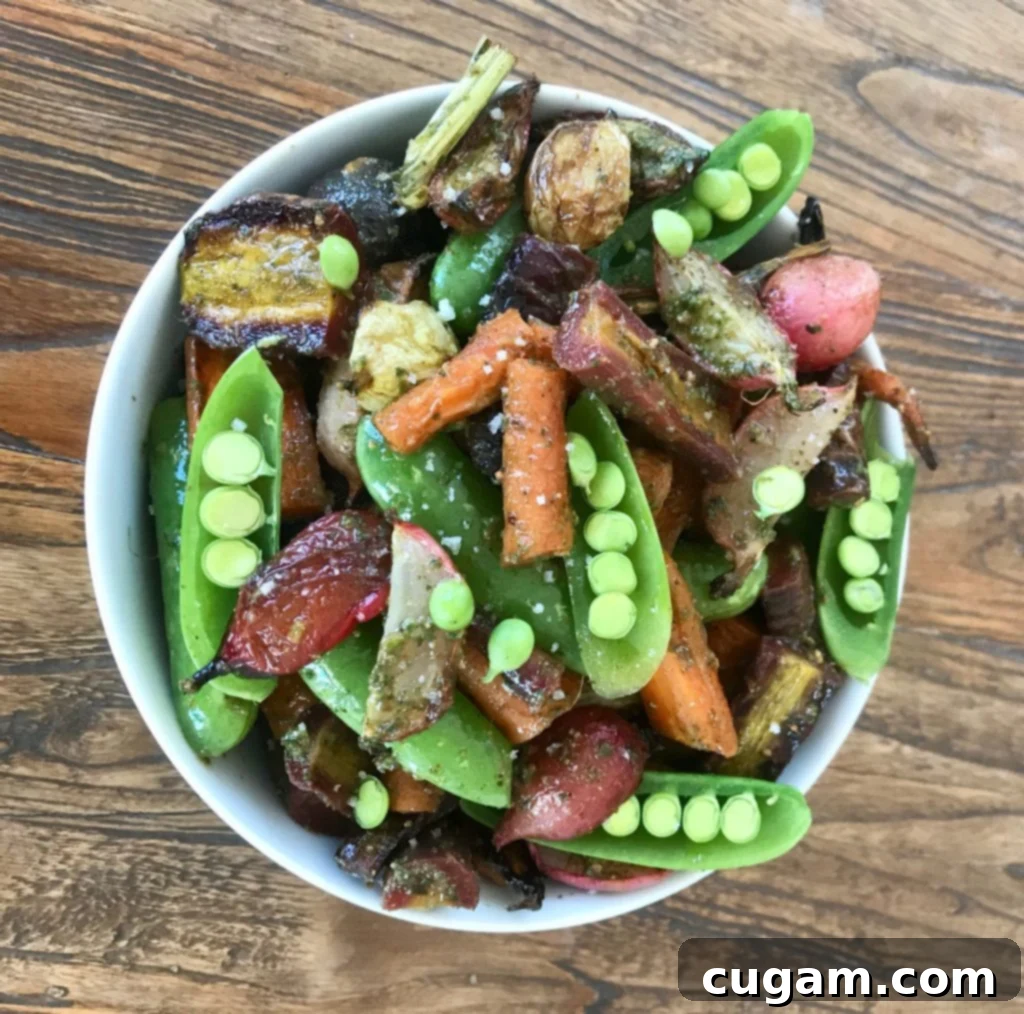
There’s a unique joy in cooking with ingredients that are not only fresh and local but also make the most of every part of the plant. This recipe embodies a “no-waste” philosophy, transforming often-discarded carrot tops into a sensational pesto. It’s an easy, tasty, and eco-conscious way to enjoy the bounty of the season, especially if you’re like me and draw culinary inspiration from your local CSA (Community Supported Agriculture) share. The gorgeous carrots, complete with their verdant tops, and the intriguing garlic scapes that appear in early summer are truly the stars of this dish. This is where the idea for a rich, vibrant **Carrot Top Pesto** was born, and it pairs absolutely beautifully with roasted vegetables.
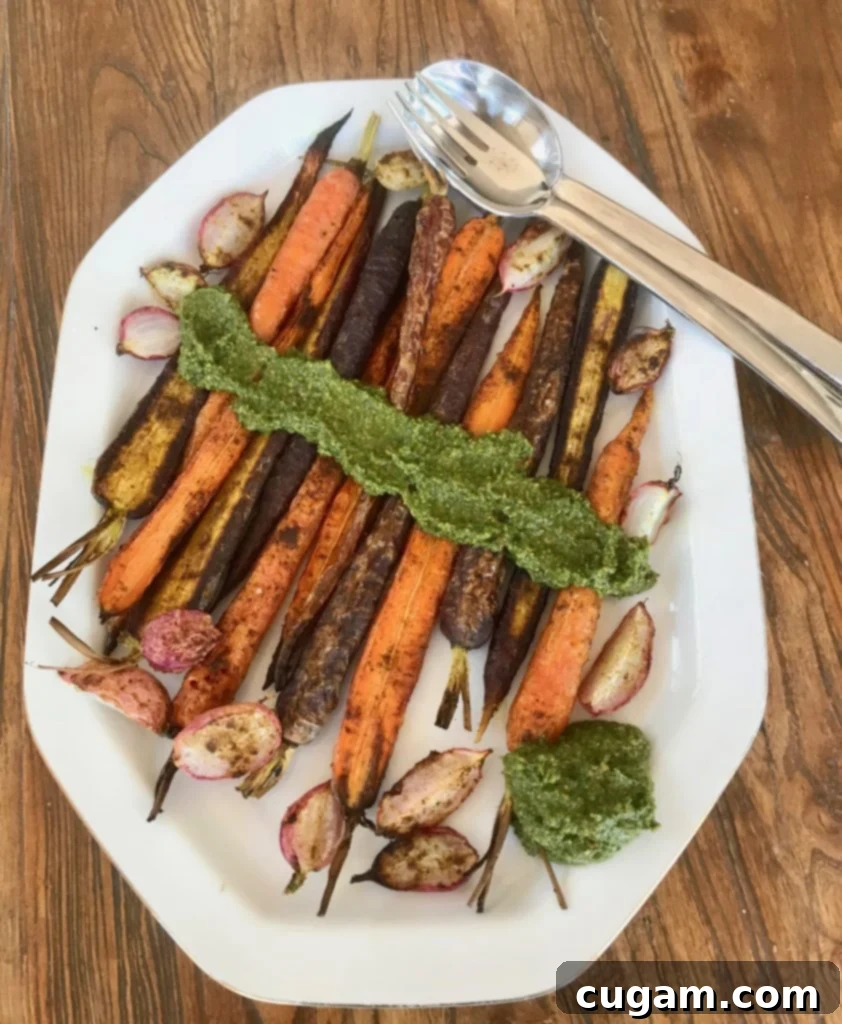
Carrot Top Pesto: A Flavorful and Nutritious Secret Revealed
If you’ve ever attended one of my cooking workshops or simply chatted with me about food, you’ll know my strong aversion to food waste. While composting is a great option for scraps, finding delicious and healthful uses for every part of the plant is even better. It truly is a shame to discard the immense nutrition and flavor found in many parts of vegetables, especially carrot greens.
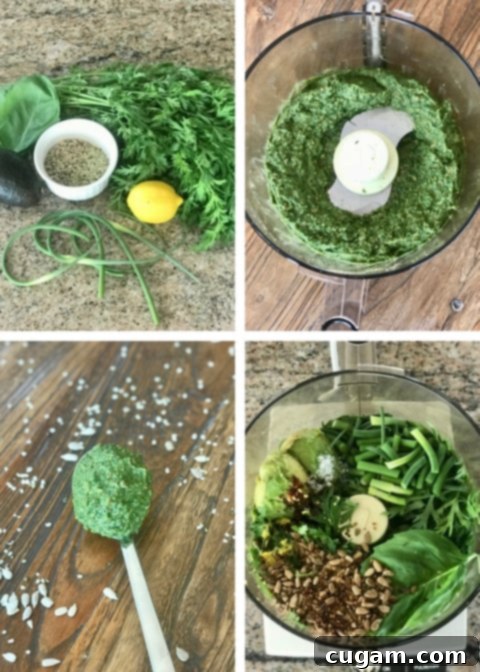
Carrot greens are far more than just a garnish; they are a nutritional powerhouse! These leafy tops contain significant amounts of Vitamins A and C, along with essential minerals like calcium and iron, a healthy dose of fiber, and Vitamin K. They are also packed with antioxidants and are a rich source of chlorophyll, which has been studied for its potential to prevent the growth and formation of tumors. When you mix these nutrient-dense greens with a healthy fat, like the avocado and olive oil used in this pesto, the fat-soluble vitamins become more absorbable by your body. Incorporating carrot top pesto into your diet can offer a boost to your immunity, support bone density, enhance eye health, help regulate blood pressure, aid digestion and detoxification, improve kidney function, and promote better circulation, among many other benefits. It’s an incredible way to pack more nutrients into your meals without even trying!
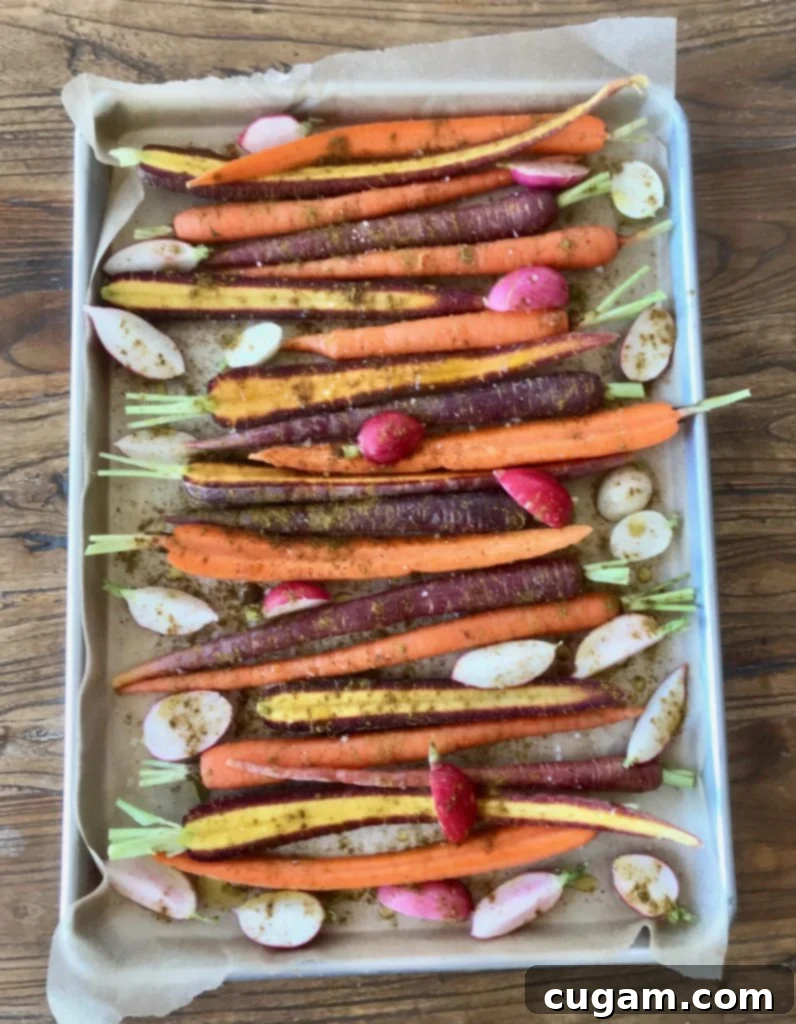
Unveiling Garlic Scapes: A Seasonal Culinary Gem
Have you ever encountered garlic scapes? These unique, curly green stalks are the flower stems that emerge from hardneck garlic plants as the bulb develops underground. They are a true seasonal delicacy, typically available only in early summer, making them a special find at farmers’ markets and sometimes even in well-stocked local grocery stores. Their limited availability makes them all the more appealing to culinary enthusiasts.
Beyond their delightful, milder-than-clove garlic flavor, garlic scapes are incredibly nutritious. They are high in dietary fiber and contain good amounts of Vitamin C and A, as well as a range of beneficial antioxidants. Studies suggest that their nutritional profile contributes to various health benefits, including protection against osteoarthritis, potential anti-cancer properties, assistance in the re-oxygenation of blood, and support for liver and kidney health. Their gentle flavor profile makes them perfect for eating raw, especially in pestos, dressings, or finely chopped in salads. If fresh garlic scapes are not available, you can substitute garlic cloves, but remember to use about half the amount to prevent the pesto from becoming overpoweringly garlicky. The mild, sweet garlicky notes of the scapes are truly unique and add a wonderful dimension to this pesto.
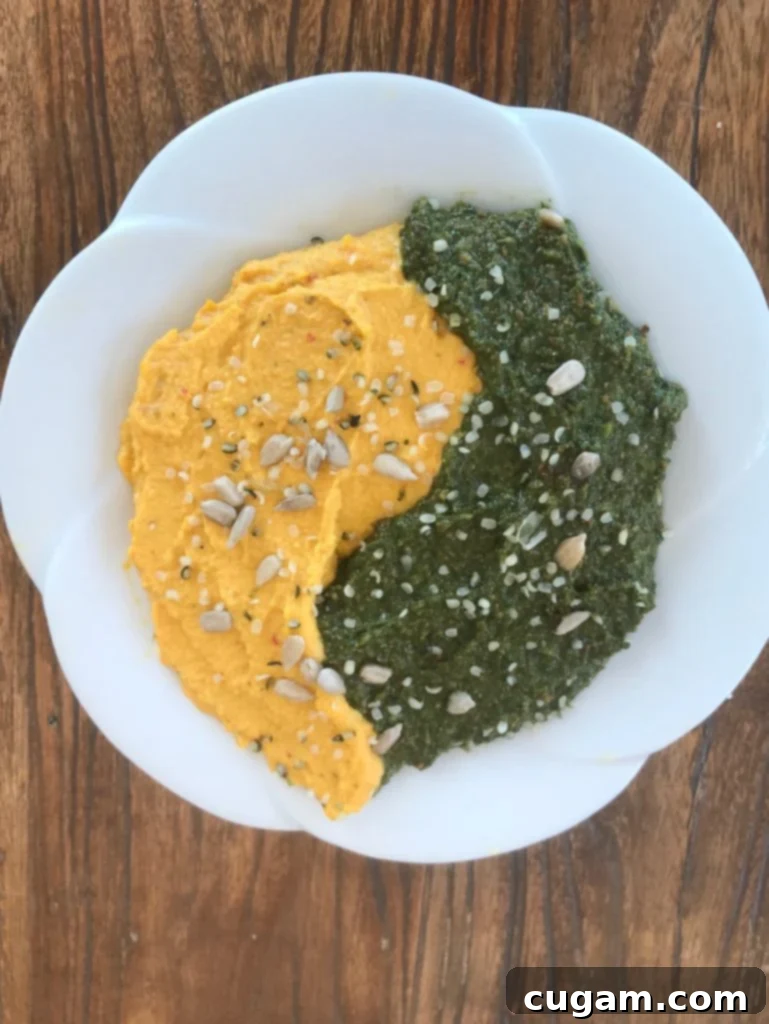
The Versatility of Carrot Top Pesto: Beyond Roasted Veggies
While this recipe brilliantly pairs **Carrot Top Pesto** with roasted and raw vegetables, its uses extend far beyond a single dish. This bright, herbaceous pesto is a fantastic addition to countless meals, adding a burst of flavor and nutrition wherever it goes. I particularly enjoy mixing it into a creamy potato salad for an unexpected twist, or drizzling it generously over ripe, juicy summer tomatoes for a simple yet exquisite appetizer. It’s also absolutely amazing when combined with some creamy hummus, creating an elevated dip perfect for crudités or pita bread. Spread it on crackers, toss it with chickpeas for a protein-packed salad, or use it as a flavorful sauce for spiralized zucchini noodles or spaghetti squash. Imagine it as a base for a gourmet sandwich spread, mixed into scrambled eggs for a vibrant breakfast, or even dolloped over grilled fish or chicken. The possibilities are truly endless, making this pesto a versatile staple in your healthy kitchen.
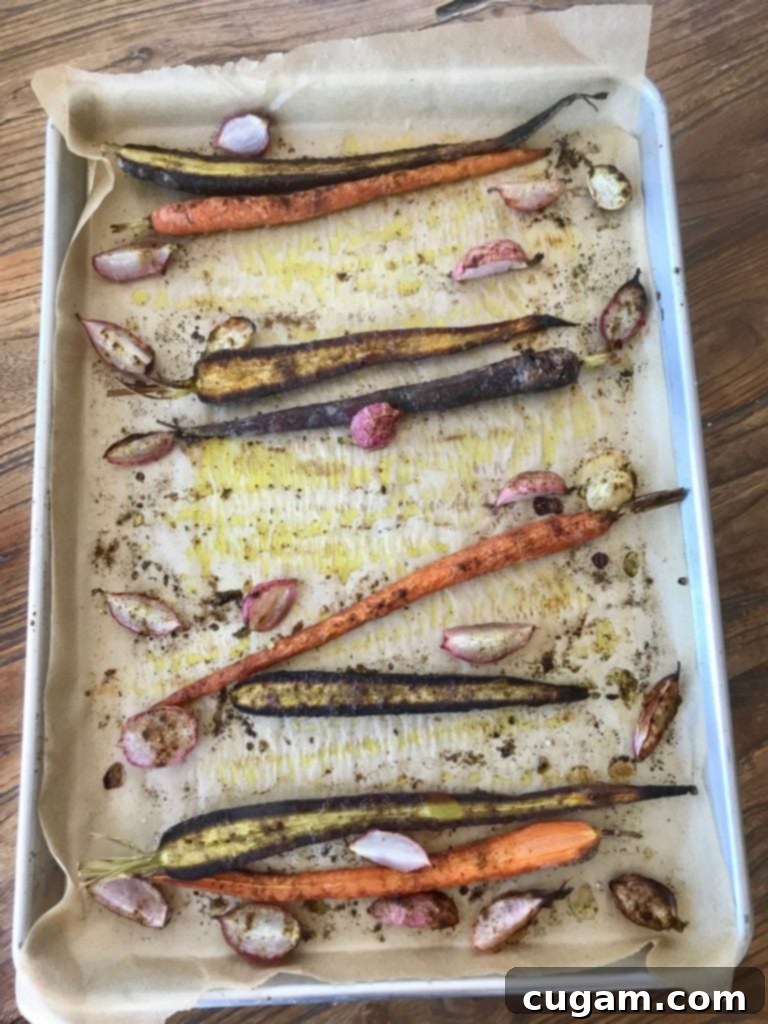
Crafting Your Perfect Roasted Vegetable Medley
This recipe is designed for ease and flexibility, allowing you to whip up a gourmet-tasting dish with minimal effort. Don’t let the complex and layered flavors fool you; the preparation is surprisingly straightforward. You can easily prepare the fresh, vibrant carrot top pesto while your vegetables are roasting to perfection. Or, if you’re a planner, the pesto can be made in advance and stored in your fridge, ready to elevate any meal. And for those times when carrot tops aren’t available, a batch of a classic arugula spinach pesto can be a fantastic substitute.
The beauty of this dish lies in its adaptability. My inspiration for this particular medley came from last week’s CSA share, which featured an abundance of crisp carrots, earthy radishes, unique garlic scapes, and sweet sugar snap peas. This combination creates a delightful interplay of textures and flavors – the tender, caramelized sweetness of roasted carrots, the slightly spicy bite of roasted radishes, and the fresh, crisp crunch of raw snap peas. However, I strongly encourage you to unleash your culinary creativity! Feel free to substitute with whatever seasonal vegetables your local market or CSA provides. Think asparagus, bell peppers, zucchini, or even sweet potatoes. Roasting brings out an incredible sweetness and depth of flavor in root vegetables, while the raw additions provide a refreshing contrast. The goal is to create a beautiful summer salad that speaks to your taste buds and available produce. Share your unique creations in the comments below – I’d love to hear what you come up with!
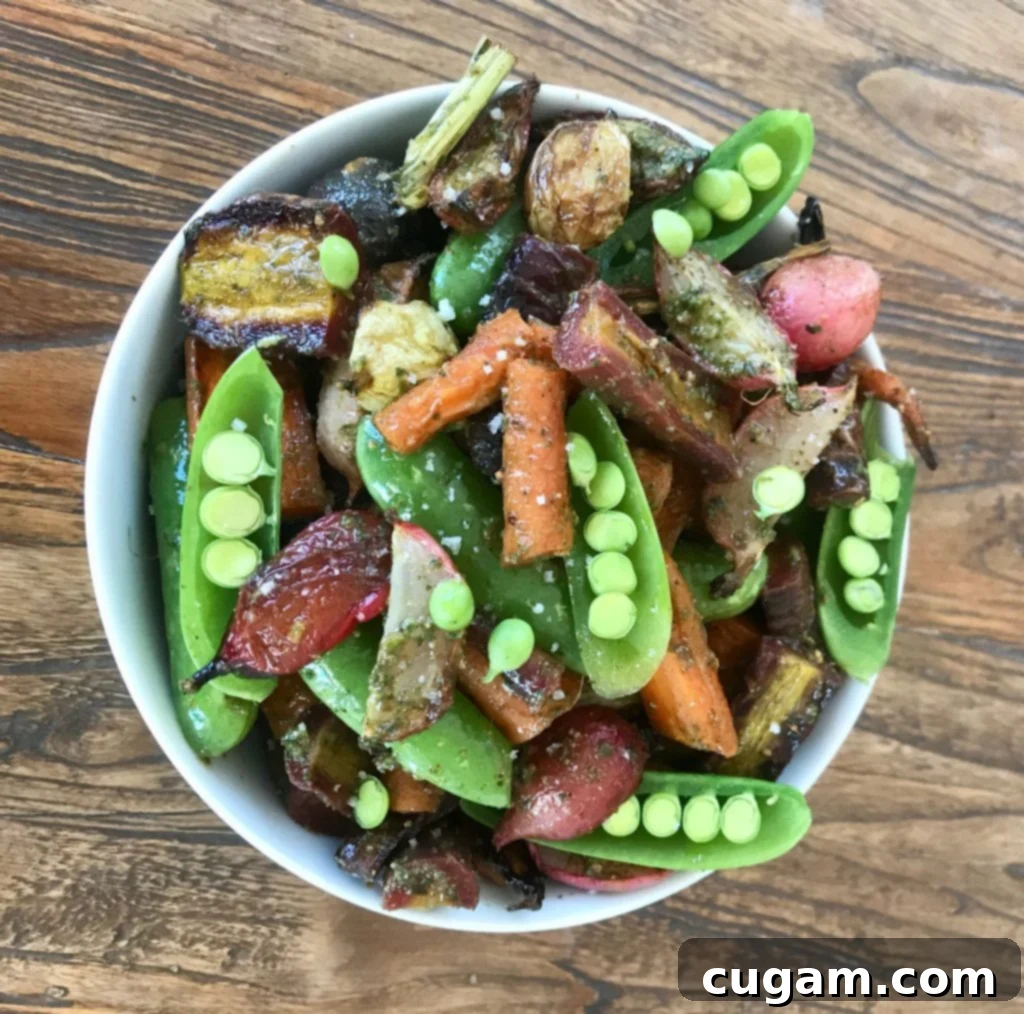
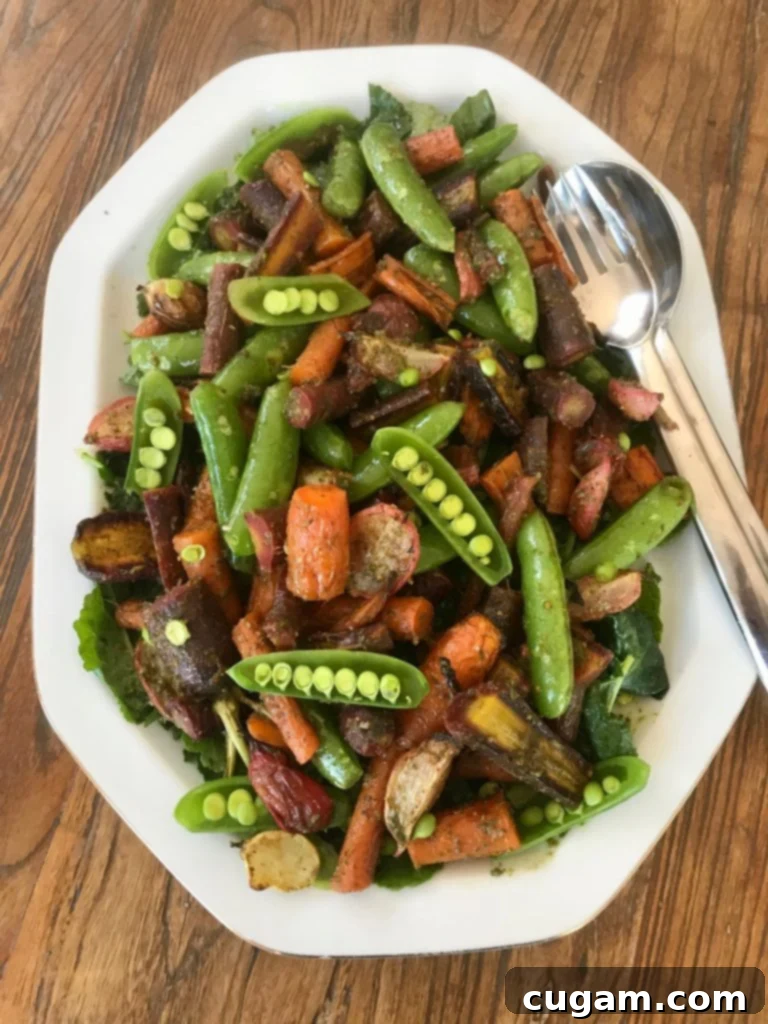
📖 Recipe

Roasted Veggies + Carrot Top Pesto
Rate this Recipe
Pin Recipe
Ingredients
Carrot Top Pesto
- 6 large Basil leaves
- 1 bunch Carrot Tops approx. 2 cups
- 4 Garlic Scapes roughly chopped
- ¼ teaspoon Sea Salt
- ¼ teaspoon crushed red pepper
- 1 lemon zested and juiced
- 1 small avocado + 2 Tablespoons olive oil
- 1 Tablespoon Hemp seeds
- 2 Tablespoons Sunflower Seeds.
- 2-3 Tablespoon water
Roasted Veggies
- 2 bunches carrots sliced in half lengthwise if thick
- 1 bunch radishes sliced in half lengthwise
- 2 Tablespoons olive oil
- 1 teaspoon cumin
- ½ teaspoon coarse sea salt
Remaining Ingredients
- 2 cups baby greens optional I used baby kale
- 2 cups sugar snap peas
- 1 Tablespoon olive oil
- 1 Tablespoon lemon juice
- S+P to taste
Instructions
Make the pesto
-
Place hemp seeds and sunflower seeds in a dry skillet over medium heat. Toast them, gently shaking the pan, until they turn golden brown and fragrant, approximately 3 minutes. This step enhances their nutty flavor.
-
Transfer all pesto ingredients, including the freshly toasted seeds, but excluding the water, to the bowl of a food processor. Pulse the mixture until all ingredients are well combined and form a coarse paste. Gradually add the water, a tablespoon at a time, continuing to pulse until your desired consistency is achieved – whether you prefer a thicker spread or a smoother sauce.
Roast Veggies
-
Preheat your oven to 450°F (232°C). Line a large, rimmed baking sheet with unbleached parchment paper to prevent sticking and make cleanup easier.
-
Prepare the carrots and radishes. If the carrots are thick, slice them in half lengthwise. Similarly, slice the radishes in half lengthwise. Arrange these prepared vegetables in a single layer on the parchment-lined baking pan, ensuring they are not overcrowded for even roasting.
-
Drizzle the olive oil evenly over the arranged vegetables. Sprinkle the cumin and coarse sea salt across them. Toss gently to ensure all vegetables are lightly coated. Roast for 30 minutes, or until the thickest carrots are tender when pierced with a fork and show signs of caramelization.
-
While the vegetables are roasting, prepare the base if you’re using greens. In a separate bowl, lightly toss the baby greens (such as baby kale) with 1 tablespoon of carrot top pesto, 1 tablespoon of olive oil, and 1 tablespoon of fresh lemon juice. Arrange these dressed greens artfully on your serving platter.
-
Once the roasted vegetables are done, remove them from the oven. Trim the sugar snap peas and cut the roasted carrots and radishes into bite-sized pieces for easier eating. In a large bowl, combine the roasted veggies and sugar snap peas. Add a generous amount of carrot top pesto, along with additional lemon juice and olive oil to taste. Toss everything gently to ensure an even coating. Spoon this vibrant mixture over the dressed greens on your platter.
-
Enjoy immediately! The pesto itself will stay fresh in an airtight container in the fridge for up to 5 days, and the roasted veggies (undressed) can also be stored separately. However, for the best texture and flavor, dress the greens and combine all ingredients just before serving, as dressed greens tend to get soggy over time.
Nutrition
Note
The nutrition calculations were done using online tools. To obtain the most accurate representation of the nutritional information in any given recipe, you should calculate the nutritional information with the actual ingredients you used. You are ultimately responsible for ensuring that any nutritional information is accurate, complete and useful.
